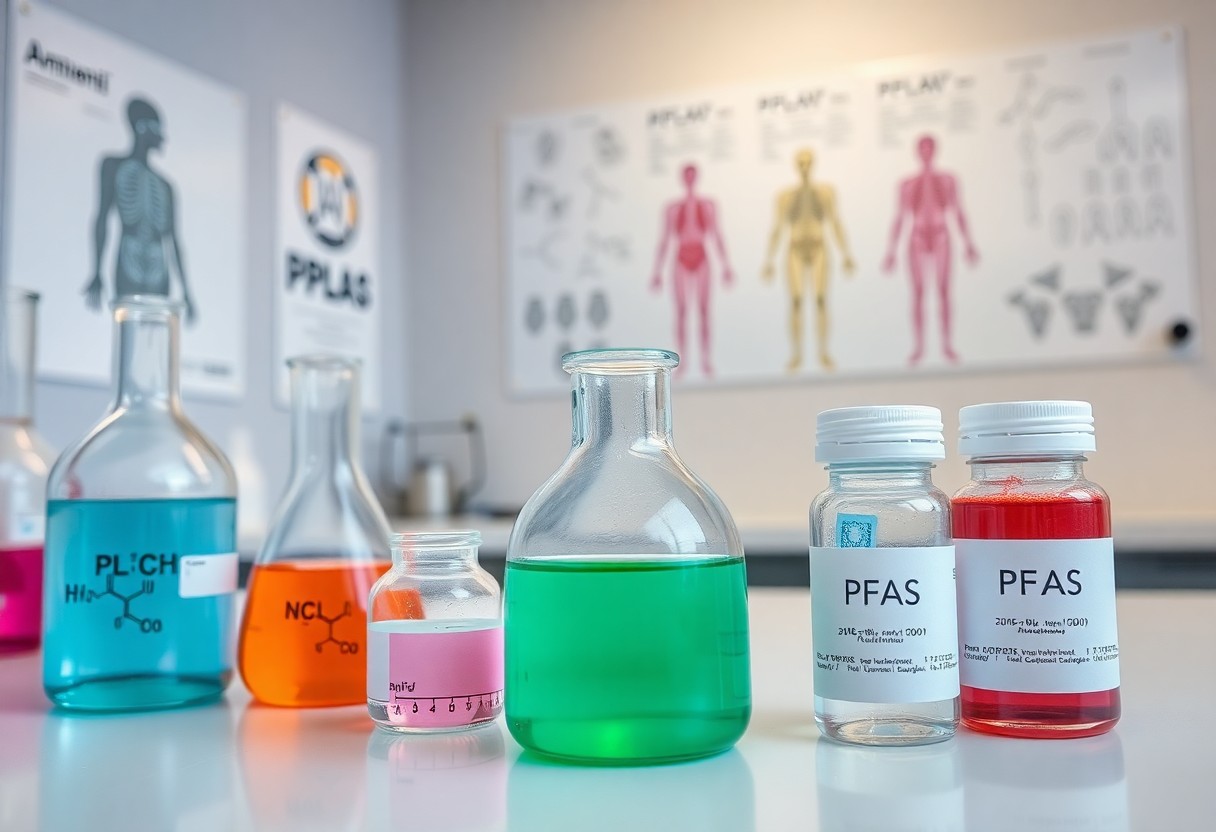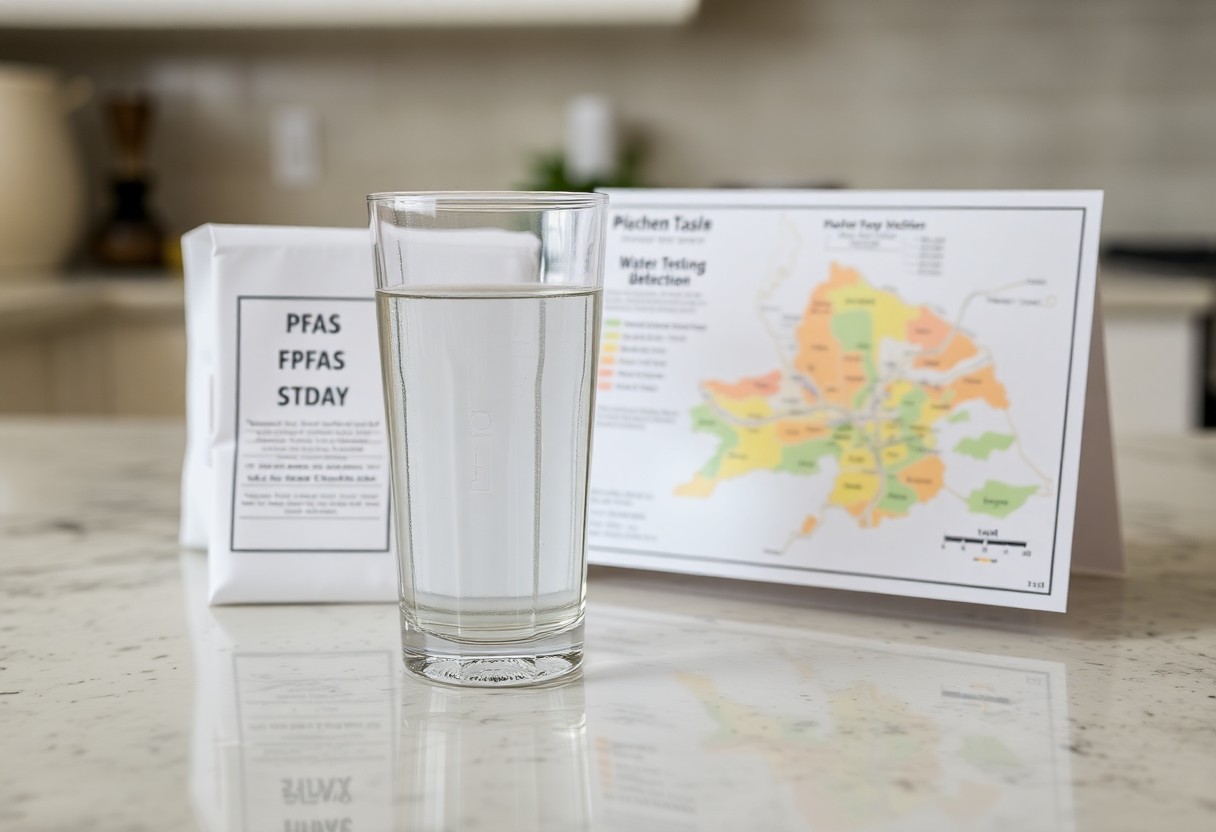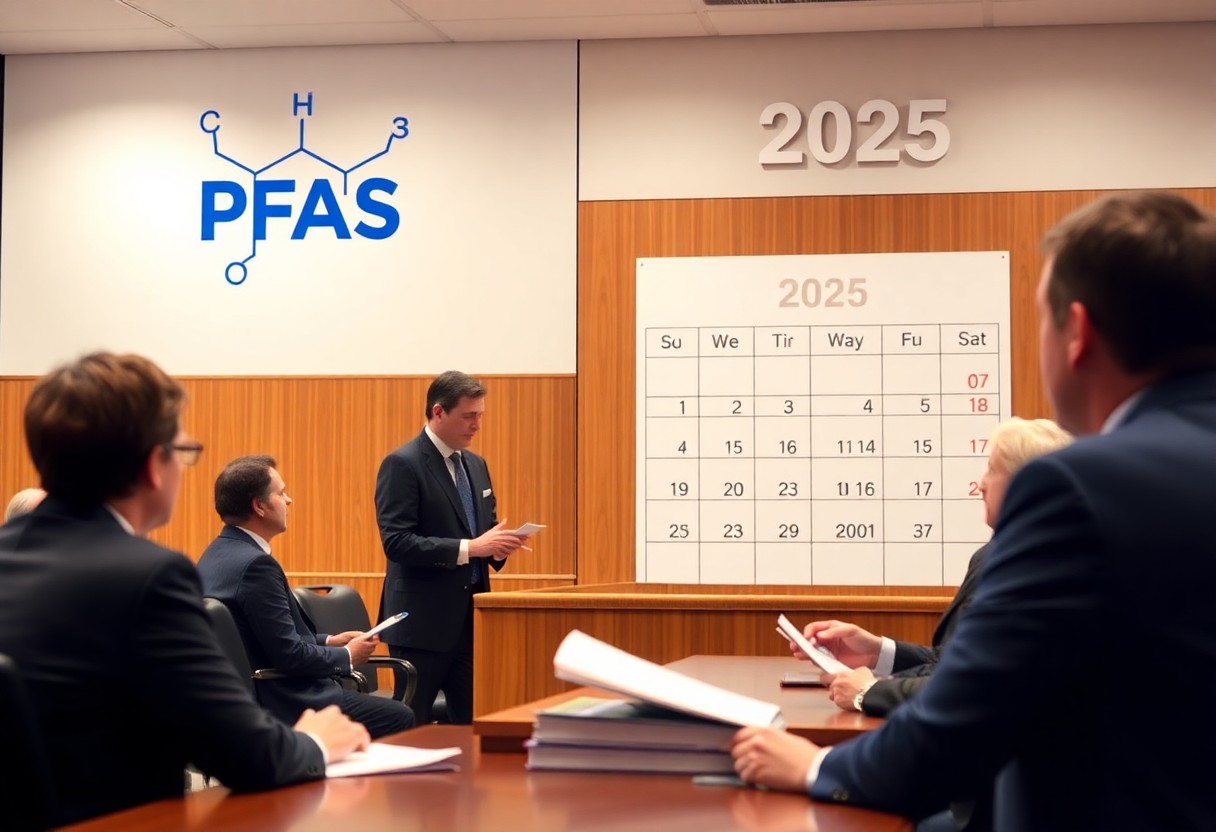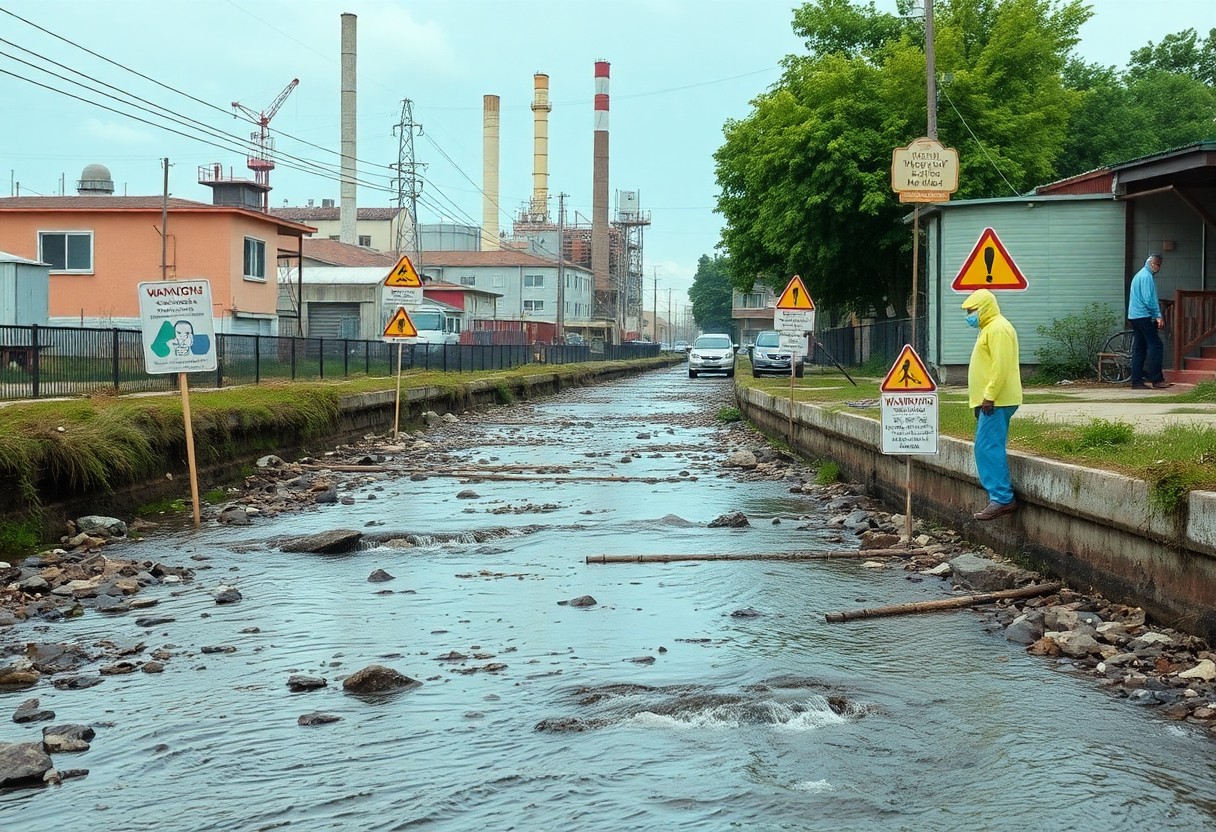Many individuals are becoming increasingly concerned about the impacts of PFAS (per- and polyfluoroalkyl substances) on health and the environment. Understanding the differences between state and federal lawsuits can significantly affect your approach to legal action. Each level of government has its own regulations and enforcement mechanisms, which can influence compensation and remediation efforts for PFAS contamination. This article will guide you through the key distinctions, helping you navigate your options effectively.
Overview of PFAS
The presence of per- and polyfluoroalkyl substances (PFAS) has sparked significant concern due to their widespread use and persistent nature in the environment. These synthetic chemicals have been integrated into various consumer products for decades, leading to contamination of water supplies, soil, and wildlife. The growing awareness of PFAS’s negative effects on human health and ecosystems has prompted many states and federal agencies to examine regulations and lawsuits related to their use and remediation.
Definition of PFAS
An acronym for per- and polyfluoroalkyl substances, PFAS refers to a group of man-made chemicals that contain fluorine and carbon. Known for their water- and grease-resistant properties, they have been widely used in products such as non-stick cookware, water-repellent clothing, and firefighting foams. Their unique chemical structure contributes to their persistence in the environment, leading to a buildup in ecosystems and human bodies over time.
Health and Environmental Impacts
To understand the implications of PFAS, you should recognize their association with various health issues and environmental concerns. Studies indicate that exposure to PFAS can lead to serious health effects, including liver damage, immune system dysfunction, and increased risk of certain cancers. Moreover, PFAS contamination can severely harm ecosystems, affecting wildlife and disrupting food chains, underscoring the importance of addressing these substances promptly.
Plus, as you learn more about the impacts of PFAS, it’s vital to be aware of how these substances can affect your health and surroundings. Research suggests that PFAS exposure is linked to reproductive issues, thyroid disease, and developmental problems in children. Additionally, PFAS have been found in drinking water supplies, raising concerns about the potential for long-term health risks for communities. As you consider the importance of addressing PFAS contamination, understanding both the health effects and environmental consequences can empower you to advocate for necessary change and better protection of public health and the environment.

State PFAS Lawsuits
Some states have taken the lead in addressing the environmental and health concerns related to PFAS (Per- and Polyfluoroalkyl Substances) by initiating lawsuits against manufacturers. These cases often stem from the contamination of drinking water supplies and the harmful effects of PFAS exposure on public health and the environment. State PFAS lawsuits aim to hold accountable those responsible for pollution while seeking remediation and compensation for affected communities.
Common Legal Grounds
Against manufacturers of PFAS, states typically base their legal claims on environmental regulations, nuisance, negligence, and strict liability. These grounds hinge on the assertion that the companies failed to disclose the dangers associated with PFAS, contributed to environmental harm, and neglected their duty to prevent contamination of vital resources like water supplies.
Recent State-Level Case Studies
Studies indicate a rising number of state-level PFAS lawsuits that have inflamed public and governmental attention. Here are several key cases demonstrating the breadth of this issue:
- New York vs. DuPont – Settled for $50 million to remediate polluted water systems.
- Michigan – Issued a lawsuit resulting in a $18 million settlement with 3M for contamination cleanup.
- California – Filed a suit seeking damages over 4 million gallons of PFAS-laden fire-fighting foam spills.
- New Hampshire – Awarded $12 million to fund a PFAS monitoring program after a significant case against Saint-Gobain.
Another notable case in Pennsylvania illustrates how aggressive litigation can drive change. The state secured a $5 million settlement from Tyco Fire Products in an ongoing effort to combat PFAS pollution. Your involvement in following or supporting local initiatives can enhance these efforts, pushing for accountability and healthier environments. The outcomes from these cases not only facilitate remediation but also raise awareness about the dangers of PFAS, driving future regulations for safer manufacturing processes.
Federal PFAS Legislation
Clearly, federal PFAS legislation addresses the growing public concern over the environmental and health impacts of per- and polyfluoroalkyl substances. The U.S. government has introduced various regulatory measures to control PFAS emissions, establish safety standards, and facilitate cleanup efforts. By understanding the federal landscape, you can better navigate the implications of these laws for your community and stakeholders.
Overview of Federal Laws and Regulations
Legislation enacted at the federal level aims to regulate PFAS through specific frameworks, such as the Safe Drinking Water Act and the Comprehensive Environmental Response, Compensation, and Liability Act. These regulations focus on monitoring PFAS levels in drinking water and mitigating their spread in the environment, providing you with a robust insight into how these laws shape public health policies.
Key Federal Cases and Outcomes
After significant developments in the federal legal landscape, various cases have emerged involving PFAS contamination. Federal courts have ruled in favor of communities seeking remediation, while holding companies liable for damages caused by PFAS. These outcomes underscore the judiciary’s commitment to addressing PFAS harm and protecting public health.
Federal court rulings have played a pivotal role in shaping the PFAS legal environment, with landmark cases establishing that companies can be held accountable for environmental contamination. Notably, certain decisions have led to multi-million dollar settlements aimed at funding cleanup efforts and supporting impacted communities. Such outcomes also emphasize the need for companies to adopt better practices regarding PFAS management, reflecting a growing acknowledgment of both environmental justice and public health imperatives. Keeping abreast of these developments will empower you in your advocacy and policy understanding related to PFAS issues.
Comparison of State and Federal Approaches
Not all PFAS lawsuits are created equal. Below is a breakdown of how state and federal approaches differ in addressing these concerns.
| Aspect | State Approach |
|---|---|
| Regulation | States often implement stricter regulations. |
| Litigation | More frequent private lawsuits filed at the state level. |
| Settlement | Higher likelihood of community-focused settlements. |
Jurisdictional Differences
State laws usually govern PFAS litigation within individual jurisdictions, allowing you to observe different legal landscapes based on geographic location. Federal laws, while providing a baseline, can be more generalized and less adaptable to specific regional needs.
Remedial Measures and Penalties
An important aspect of PFAS lawsuits involves how remedial measures and penalties are enforced. State laws may impose significant penalties and demand immediate corrective actions, often tailored to local conditions.
Also, state authorities might require a detailed cleanup plan that aligns with community health needs. Strong enforcement mechanisms can lead to higher fines for violators, encouraging compliance. Communities often benefit from localized responses, which can ensure that the most relevant factors are considered, such as public health, environmental impacts, and the swift rectification of contamination sources.
Challenges in PFAS Litigation
Despite the growing awareness of PFAS contamination, litigation faces numerous challenges. The complexity of these cases often stems from the long latency period of health effects, lack of established standards, and the widespread use of PFAS substances. You may find it difficult to navigate the intricacies of proving causation and identifying responsible parties, all while dealing with potential economic consequences that can affect your ability to pursue justice.
Scientific Evidence and Burden of Proof
By presenting scientific evidence, you must demonstrate a clear linkage between PFAS exposure and health outcomes. This burden of proof often requires extensive research, expert testimonies, and sometimes even longitudinal studies. The need for robust scientific data can delay the litigation process and increase the costs associated with your case.
Legal and Financial Obstacles
Beside the scientific challenges, you may encounter significant legal and financial obstacles in PFAS litigation. Companies often have extensive resources to fight claims, increasing the complexity and duration of cases.
Consequently, many plaintiffs face high legal costs and potential financial strain when pursuing PFAS lawsuits. The lengthy timelines associated with these cases can lead to uncertainty, placing additional pressure on you as you balance the costs of both litigation and any necessary healthcare. As you navigate this landscape, it’s vital to be prepared for potential settlement negotiations and seek experienced legal counsel who can help you assess your options effectively.
Future Outlook
Now is a critical time for understanding the trajectories of state and federal PFAS lawsuits. As awareness of the dangers posed by PFAS contamination increases, lawmakers are expected to enact more comprehensive regulations and policies at both levels. The evolving landscape suggests that as more individuals and communities become informed and mobilize, you’ll likely witness a surge in legal actions and legislative initiatives aimed at reducing PFAS exposure.
Anticipated Changes in State and Federal Policies
Above all, you can expect harmonization efforts between state and federal policies concerning PFAS regulations. States may increasingly adopt stricter measures to curb PFAS pollution, while federal guidelines are expected to establish baseline standards to protect public health. Such shifts will likely lead to a more unified approach in addressing the environmental and health risks posed by these substances.
Emerging Trends in PFAS Litigation
After years of rising awareness about PFAS, litigation is evolving to reflect new scientific findings and increased public concern. You may notice that lawsuits are shifting focus towards not only the manufacturers but also the retailers and supply chains involved in PFAS production and distribution. This could lead to broader accountability and more significant settlements for affected communities. Additionally, innovative legal strategies, such as using health impact evidence, are becoming more prevalent, signaling a more aggressive approach to seeking justice for harmed individuals.
Litigation surrounding PFAS is becoming increasingly complex and multifaceted, with a growing emphasis on the health impacts these chemicals have on both individuals and communities. You might see emerging evidence linking PFAS exposure to various illnesses, compelling plaintiffs to pursue class-action lawsuits more vigorously. Moreover, as scientific research continues to evolve, you could uncover grounds for new types of legal claims, such as environmental contamination or negligence, targeting both established manufacturers and emerging players in the PFAS market. This evolving landscape is crucial for shaping how future cases are approached and resolved, setting the stage for significant changes in accountability and remediation efforts.
To wrap up
Following this exploration of state versus federal PFAS lawsuits, you should now have a clearer understanding of the key differences that shape these legal landscapes. Your awareness of how state laws can be more stringent than federal regulations will help you navigate potential PFAS-related issues effectively. Additionally, recognizing how these legal frameworks interact can empower you to engage in informed discussions and decisions regarding environmental health and safety. Staying informed on these matters is imperative for anyone concerned about the implications of PFAS exposure within their community.



















